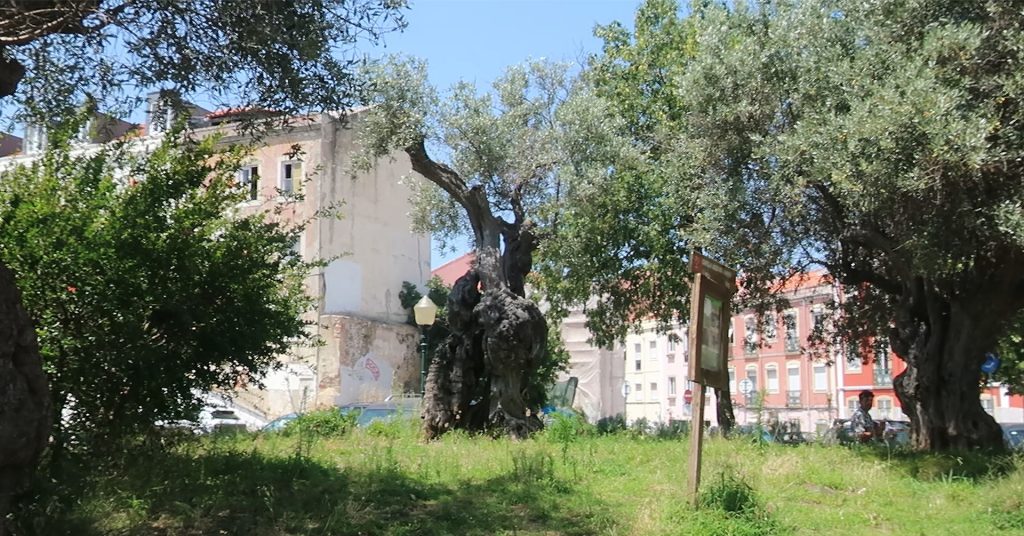
The Olive Trees of Santo Amaro
Regular Name: Olive Tree
Scientific Name: Olea europaea L. var. europaea
Location: Capela de Santo Amaro, Alcântra, Lisboa, Portugal
Aproximated Age: 500 anos
It is not known who planted these trees here, and much has changed around them since then. They stand behind a hermitage that legend says, was built by a group of lost Galicians who hit the coast there around 1500. They built it when they found land as a promise.
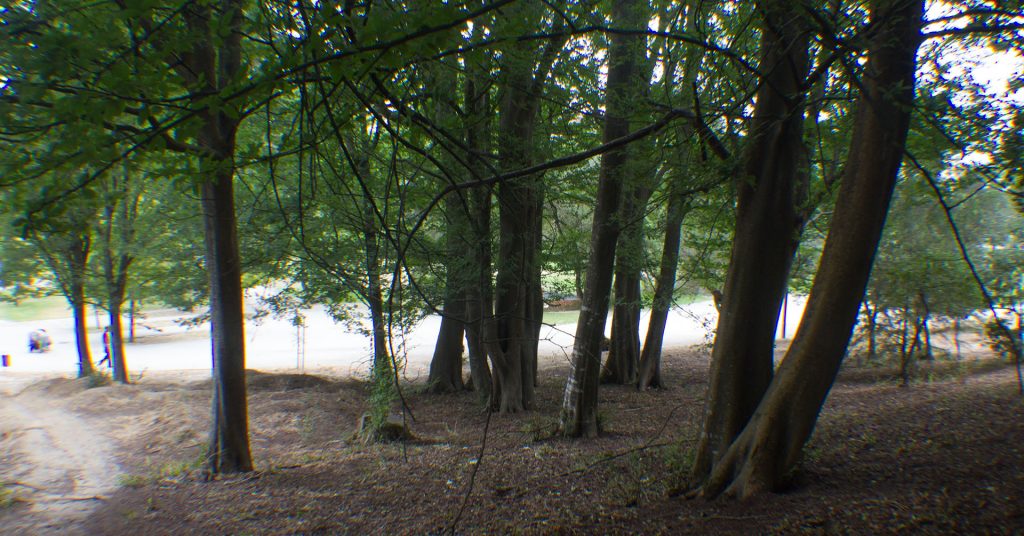
The Elm Trees of the Farm of Shells and Lilacs
Regular Name: Caucasian elm (zelcova)
Scientific Name: Zelkova carpinifolia (Pall.) K.Koch
Location: Parque da Quinta das Conchas e dos Lilases, Lumiar, Lisboa, Portugal
Aproximated Age: 120 anos
This group of Elm trees is in Quinta das Conchas, which is the third largest green spot in Lisbon, after the Parque Florestal de Monsanto and Parque da Bela Vista. Quinta das Conchas dates back to the 16th century, having been installed by Afonso Torres. After passing through several families of owners, it ended up being acquired – on February 25, 1899 – by Francisco Mantero. Its management and preservation are the responsibility of the Lisbon City Council, being open daily to the public from 06:00 to 01:00.
Since the beginning of the last century, elm trees have suffered from a serious disease, elm grafiosis, or DED (“Dutch Elm Disease”), caused by a fungus – Ophiostoma (Ceratocistis) novo-ulmi – spread by beetles, which since the 1980s it has caused a devastating death toll, and the number of elm trees has declined dramatically throughout the Northern Hemisphere.

The Olive Tree of Santa Iria da Azóia
Regular Name: Olive Tree
Scientific Name: Olea europaea L. var. europaea
Location: Santa Iria da Azóia, Loures, Lisboa, Portugal
Aproximated Age: 2870 years
The tree is located in Bairro da Covina, in Loures, in what remains of an old olive grove near the ruins of the castle of Pirescouxe, having been determined by an innovative method of dating old trees developed by UTAD. Its age is estimated at 2855 years, dating back to the time of Viriato and the invasion of the Romans to Lusitania and being older than Jesus Christ. It is on private land and was classified based on the curiosity and will of the ADPAC-Association for the Defense of the Environmental and Cultural Heritage of Santa Iria da Azóia.
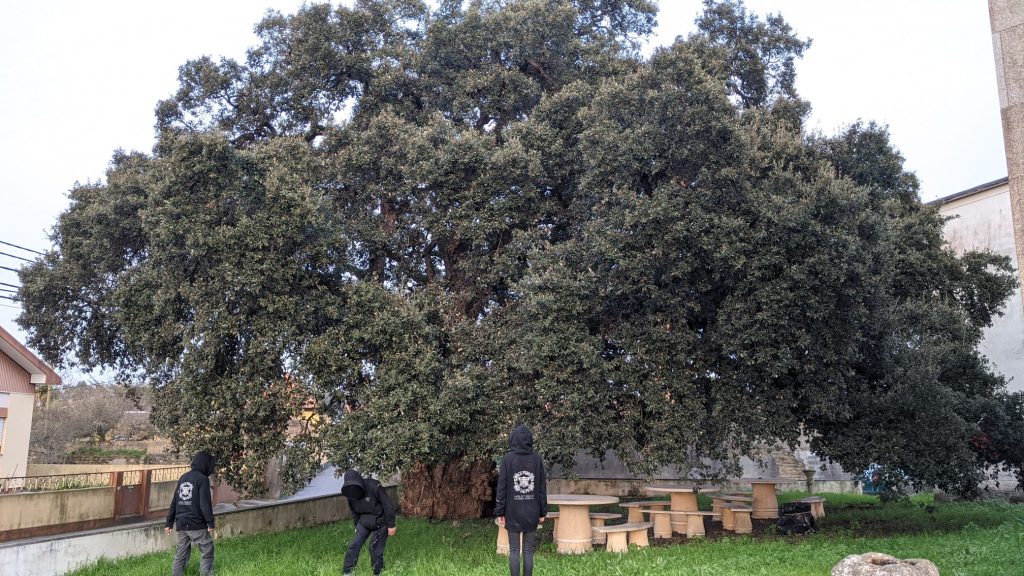
Sobreiro de S. Geraldo
Regular Name: Cork Oak
Species: Quercus Suber L.
Location: Veiros – Estarreja, Aveiro
Aproximated Age: 550 years
Affectionately known as the São Geraldo cork oak because it is located on the grounds of the chapel of the same name, the centenary tree is a classified forest heritage site, street name and parish coat of arms. Not a common species in our region, it has adapted perfectly and is now a symbol of our land. Under its leafy canopy, generations of Veirenses have played, climbed, swung and fallen in love with it. Anyone who visits it is amazed by its true grandeur.

Araucaria of Infante D. Pedro Park
Regular Name: Araucaria
Scientific Name: Araucaria heterophylla
Location: Jardim Infante D. Pedro, Aveiro
Aproximated Age: 120 years
In Parque Infante D. Pedro, the Araucaria stands tall as a striking natural landmark. With its symmetrical branches and evergreen foliage, this majestic tree adds to the park’s serene beauty. Native to South America, Araucarias are known for their unique, almost prehistoric appearance, making them a captivating sight among the park’s lush greenery. Whether admired for its grandeur or its shade on a warm day, the Araucaria is a cherished part of this tranquil urban retreat.
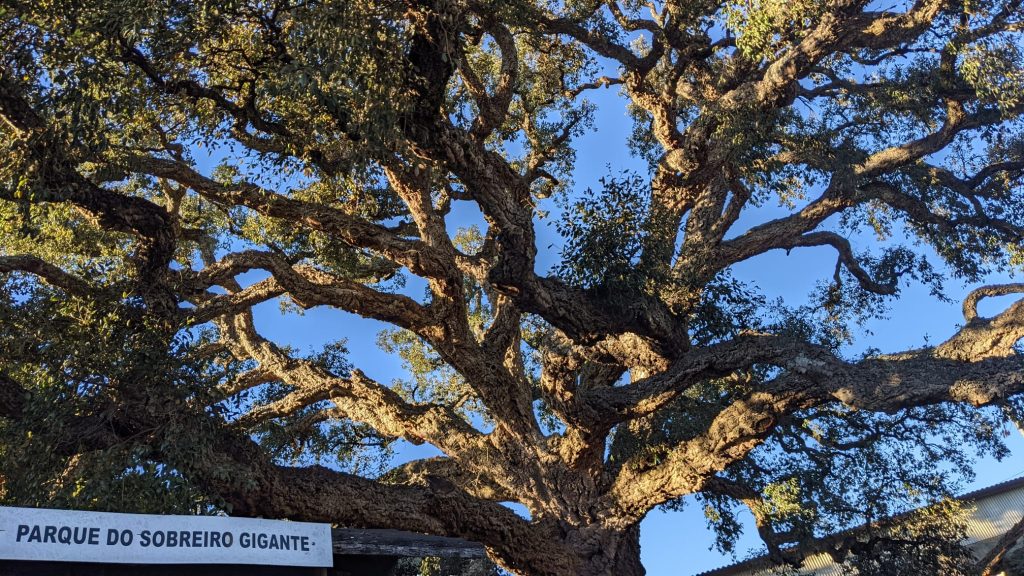
Giant Cork of Belazaima
Regular Name: Cork Oak
Species: Quercus Suber L.
Location: Belazaima do Chão, Águeda
Aproximated Age: 315 years
In the town of Belazaima there is a huge, centenary giant cork oak tree, a state heritage site. It’s worth a visit for the grandeur of the phenomenon. The parish council has completed one of the projects it had in the pipeline, which was to beautify the entire area around the cork oak. You can visit the area and enjoy the cool shade of the cork oak. Lights have been installed so that the surrounding area is illuminated at night.
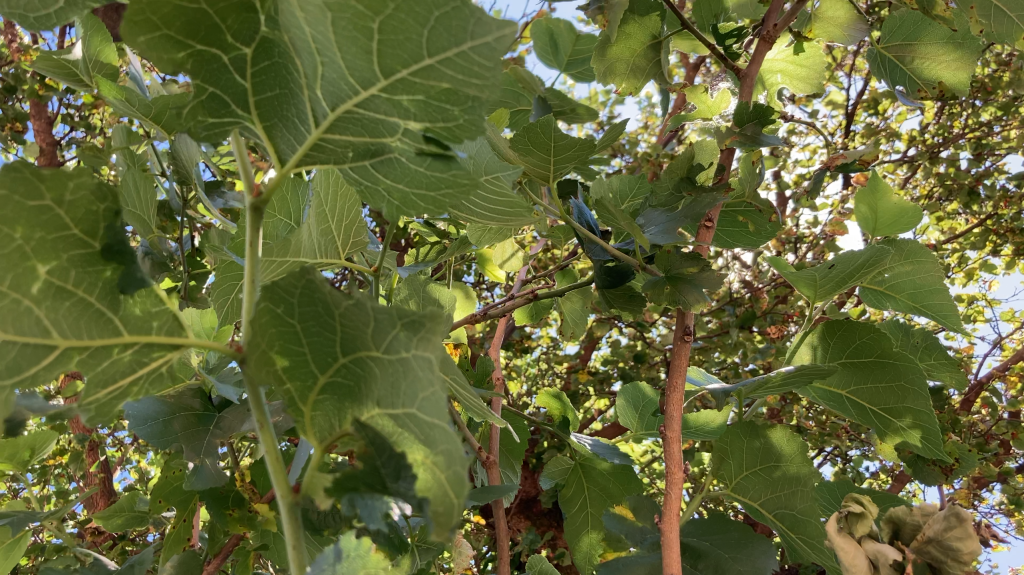
The Mulberry Tree of Atalaia do Campo
Regular Name: Mulberry Tree
Scientific Name: Morus
Location: Pelourinho de Atalaia do Campo, Fundao
Aproximated Age: +300 years
It is the first mulberry tree classified as being of public interest in the country. It is estimated to be over 300 years old and is the focal point of the village of Atalaia do Campo, in the municipality of Fundão. The leafy mulberry tree shadows another monument, the pillory, dating from 1570, which has also been classified as a building of public interest since 1933.
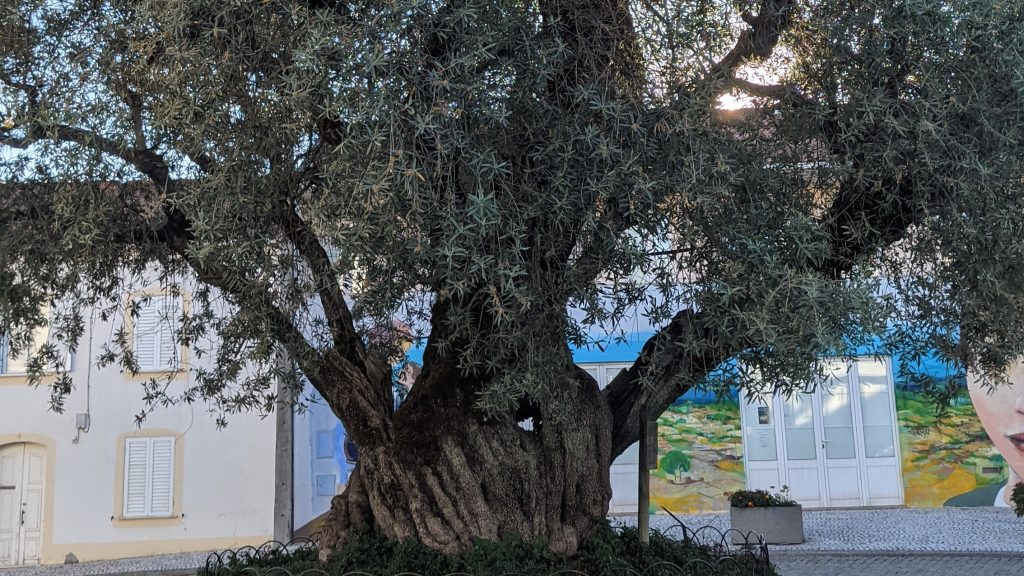
Centenary Olive tree in Montes da Senhora
Regular Name: Olive Tree
Scientific Name: Olea europaea L. var. europaea
Location: Montes da Senhora, Proença-a-Nova
Aproximated Age: +400 years
Next to the Church of Nossa Senhora do Pópulo in Montes da Senhora, you’ll find an impressive olive tree that is over 400 years old and is considered to be the oldest and most famous in the region: it is thought to have been planted at the end of the 16th century, around 1595. Originally a wild olive tree, the signs of grafting are still visible and the two species can be distinguished.
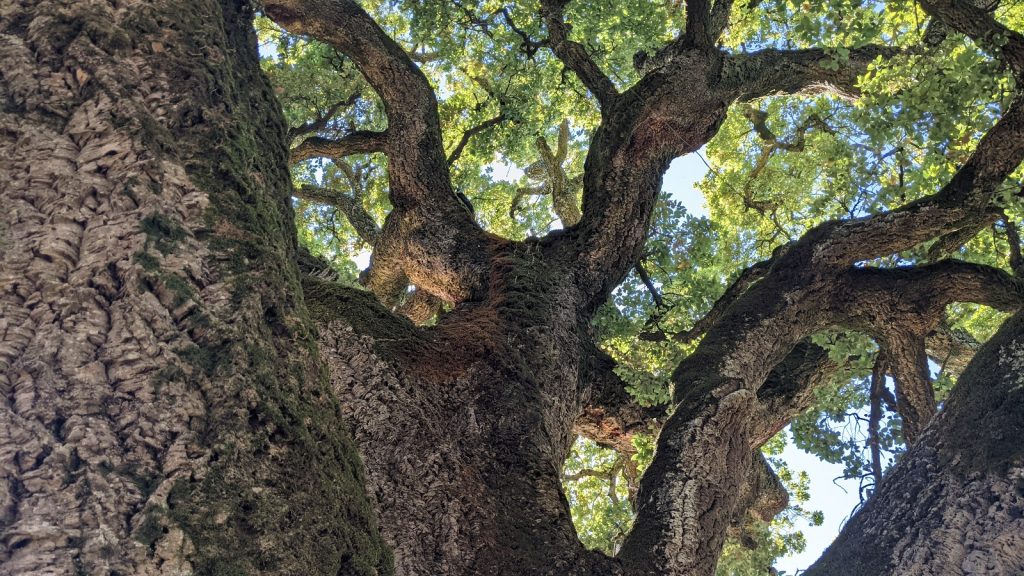
The Cork Tree of Cernache do Bonjardim
Regular Name: Cork Oak
Species: Quercus Suber L.
Location: Cernache do Bonjardim, Sertã
Aproximated Age: +200 years
In Cernache do Bonjardim, Sertã, a magnificent cork oak stands as a living testament to time, with more than 200 years of history rooted in its sturdy trunk. This ancient tree, with its thick, textured bark and sprawling branches, embodies the resilience and natural beauty of the region. As a symbol of Portugal’s deep connection to cork harvesting and conservation, it continues to thrive, offering shade and a sense of wonder to those who visit.
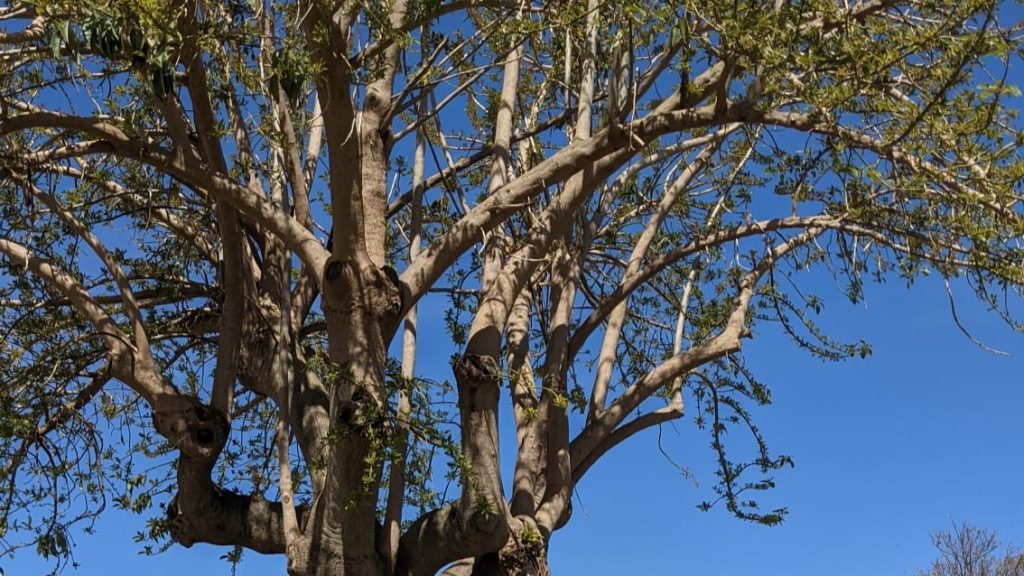
Ombú do Jardim do Castelo
Regular Name: Bela Sombra / Ombú
Species: Phytolacca dioica
Location: Jardim do Castelo, Almada
Aproximated Age: +200 years
In this garden there was a famous shade tree (Phytolacca Dioica), a fast-growing tropical tree native to Central America and a symbol of Argentina. However, due to construction work in the garden area, the original tree was killed with the excuse that it was going to be transplanted to another location. Never seen again, at the moment you can see two of its daughters on the site, smaller but still providing a beautiful shade.